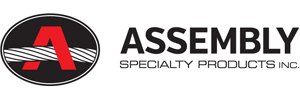OSHA Guide – Cranes and Derricks in Construction
MENU
- Introduction
- Employer Responsibilities
- Section 1400 – Scope
- Section 1401 – Definitions
- Section 1402 – Ground Conditions
- Sections 1403-1406 – Assembly and Disassembly
- Sections 1407-1411 – Power Lines
- Section 1412 – Inspections (with Section 1435(f)-Tower Crane Inspections) and Section 1436(p)-Derricks Inspections)
- Section 1413 – Wire Rope Inspection
- Section 1414 – Wire Rope – Selection and Installation Criteria
- Sections 1415 Safety Devices & 1416 Operational Aids
- Section 1417 – Operation
- Section 1418 – Authority to Stop Operation
- Section 1419-1422 – Signals
- Section 1423 – Fall Protection
- Section 1424 – Work Area Control
- Section 1425 – Keeping Clear of the Load
- Section 1426 – Free Fall and Controlled Load Lowering
- Section 1427 – Operator Qualification and Certification
- Section 1428 – Signal Person Qualifications
- Section 1429 – Qualifications of Maintenance & Repair Employees
- Section 1430 – Training
- Section 1431 – Hoisting Personnel
- Section 1432 – Multiple-Crane/Derrick Lifts
- Section 1433 – Design, Construction and Testing
- Section 1434 – Equipment Modifications
- Section 1435 – Tower Cranes
- Section 1436 – Derricks
- Section 1437 – Floating Cranes/Derricks and Land Cranes/Derricks on Barges
- Section 1438 – Overhead & Gantry Cranes
- Section 1439 – Dedicated Pile Drivers
- Section 1440 – Sideboom Cranes
- Section 1441 – Equipment with a Rated Hoisting/Lifting Capacity of 2,000 Pounds or Less
- Directory of States with Approved Occupational Safety and Health Programs
- Workers’ Rights
- OSHA Assistance, Services and Programs
- OSHA Regional Offices
- NIOSH Health Hazard Evaluation Program
Section 1400 – Scope
Covered and Excluded Equipment
The rule applies to power-operated equipment used in construction work that can hoist, lower and horizontally move a suspended load, unless such equipment is specifically excluded from coverage.
This section lists specific types of equipment that are covered and specific types that are excluded from coverage.
Covered Equipment
The types of cranes and derricks that are most commonly used in construction are covered, including:
- Mobile cranes, including crawler mounted, wheel-mounted, rough terrain, all-terrain, commercial truck-mounted, and boom truck cranes
- Tower cranes, including those with a fixed jib (i.e., “hammerhead boom”) those with a luffing boom and self-erecting tower cranes
- Articulating cranes, such as knuckleboom cranes. (See below for rules that apply when such cranes are used to deliver material to a construction site)
- All derricks, except for gin poles used for the erection of communication towers. (Note that, despite their name, “digger derricks” are not “derricks” under the standard. As noted below, the standard applies to “digger derricks” unless they are used for certain work.)
The rule also applies to the following more specialized types of equipment when used in construction:
- Floating cranes
- Cranes on barges
- Locomotive cranes
- Multi-purpose machines when configured to hoist and lower (by means of a winch or hook) and horizontally move a suspended load
- Industrial cranes (such as carry-deck cranes)
- Dedicated pile drivers
- Service/mechanic trucks with a hoisting device
- Monorail mounted cranes
- Pedestal cranes
- Portal cranes
- Overhead and gantry cranes (except that such cranes that are permanently installed in a facility are subject to OSHA’s General Industry standard, 29 CFR 179, even when used for construction work).
- Straddle cranes
- Sideboom cranes
- Digger derricks (except when used for augering holes for poles carrying electric and telecommunication lines, placing and removing the poles, and for handling associated materials to be installed on or removed from the poles)
Attachments
Equipment that is covered under the standard continues to be covered when used with crane-attached or crane-suspended attachments. Such attachments include, but are not limited to: hooks, magnets, grapples, clamshell buckets, orange peel buckets, concrete buckets, drag lines, personnel platforms, augers or drills, and pile driving equipment.
Excluded Equipment
The following types of equipment are specifically excluded from coverage:
- Equipment that would otherwise be covered while it has been converted or adapted for a non- hoisting/lifting use. Such conversions/adaptations include, but are not limited to, power shovels, excavators, and concrete pumps
- Power shovels, excavators, wheel loaders, backhoes, loader backhoes, and track loaders. This machinery is also excluded when used with chains, slings, or other rigging to lift suspended loads
- Automotive wreckers and tow trucks when used to clear wrecks and haul
- Digger derricks when used for augering holes for poles carrying electric and telecommunication lines, placing and removing the poles, and for handling associated materials to be installed on or removed from the poles. Digger derricks used in such pole work must comply with either 29 CFR 269 (electric lines) or 29 CFR 1910.268 (telecommunication lines)
- Machinery originally designed as vehicle-mounted aerial devices (for lifting personnel) and self-propelled elevating work
- Telescopic/hydraulic gantry systems
- Stacker cranes
- Powered industrial trucks (forklifts), except when configured to hoist and lower (by means of a winch or hook) and horizontally move a suspended
- Mechanic’s truck with a hoisting device when used in activities related to equipment maintenance and repair
- Machinery that hoists by using a come-a-long or chain fall
- Dedicated drilling rigs.
- Gin poles when used for the erection of communication towers
- Tree trimming and tree removal work
- Anchor handling or dredge-related operations with a vessel or barge using an affixed A-frame
- Roustabouts
- Helicopter cranes
Special Rules for Articulating/Knuckleboom Cranes Used to Deliver Material to a Construction Site
It is common for material to be delivered to and unloaded on a construction site using a truck on which is mounted an articulating/knuckle-boom crane. Such equipment is covered by the standard when used in construction work.
When such equipment delivers materials by placing them on the ground without arranging them in a particular sequence for hoisting, the activity is not considered construction work and is not covered under the standard. This exclusion applies regardless of the type of material being delivered.
However, when the delivery equipment is used to transfer the materials onto a structure, the activity is considered construction work. Nevertheless, the activity is excluded from the standard if all of the following conditions are met:
- The materials are sheet goods (such as sheet rock, plywood, or sheets of roofing shingles) or packaged goods (such as roofing shingles, bags of cement, or rolls of roofing felt)
- The equipment uses a fork/cradle at the end of the boom to deliver the materials
- The equipment is not used to hold, support, or stabilize the material to facilitate a construction activity, such as holding material in place while it is attached to the structure
- The equipment is equipped with a properly functioning automatic overload prevention device
This exception, as noted, is limited to delivery of sheet goods and packaged goods. It does not apply to delivery of prefabricated components or building sections, such as roof trusses and wall panels. It also does not apply to delivery of structural steel members or components of a systems-engineered metal building.

